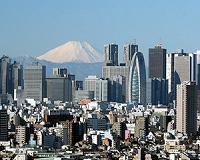 |
Osaka (AFP) March 25, 2011 Japan's government on Friday asked people still living within 20-30 kilometres (12-18 miles) of the stricken Fukushima nuclear plant to leave voluntarily, after it earlier told them to stay indoors. Hundreds of thousands of residents were evacuated from within a 20 km radius of the plant in the days after it was damaged by the March 11 earthquake and tsunami which disabled its crucial cooling systems. As radioactive steam and smoke have wafted from the crippled site, and as hundreds of workers have battled to stabilise it, several foreign governments have urged their citizens to leave areas within 80 or even 100km of the plant. Japan's top government spokesman on Friday asked people remaining within the 30km zone to leave voluntarily, urging them to do so both for their own comfort and because radiation contamination may increase. "It has become difficult for them to get daily necessities because the distribution of goods has stagnated," said Chief Cabinet Secretary Yukio Edano. "It is desirable that they voluntarily evacuate. I cannot rule out the possibility that the government will issue an evacuation order for this area if the radiation level goes up further."
earlier related report The level of radiation found in a sample of Komatsuna, or Japanese mustard spinach, was 890 becquerels per kilogram, exceeding the legal limit of 500, the ministry said. It is the first time radioactive caesium exceeding the legal limit has been found in a Tokyo vegetable, public broadcaster NHK said. Two weeks after Japan was crippled in the March 11 earthquake and tsunami, the crisis at the Fukushima nuclear plant northeast of Tokyo remains unresolved. With the plant emitting radioactive materials, higher levels of radiation have been found in nearby farm produce and Japan has stopped the shipment of those vegetable and dairy products. Tokyo's drinking water hit unsafe levels for infants this week amid the global food scare. The ministry said that the radioactive caesium was detected on Thursday in the leafy green Komatsuna taken from a field in Edogawa ward on Wednesday. It had been grown at a research centre and is not being sold on the market. The level of radioactivity would not have an adverse effect on health, even if the vegetable was eaten, the report said. On Friday South Korea and the EU joined the United States, Russia and several other countries in restricting food imports. Higher radioactivity has also been detected in the ocean near the Fukushima plant on Japan's Pacific coast, raising public fears about the safety of fish and seaweed, which are traditional staples in the island nation's diet.
Share This Article With Planet Earth
Related Links Space Technology News - Applications and Research
 Tokyo water unsafe for babies, food bans imposed
Tokyo water unsafe for babies, food bans imposedTokyo (AFP) March 24, 2011 Tokyo warned Wednesday that radioactive iodine over twice the safe level for infants had been detected in its tap water after Japan's massive earthquake crippled a nuclear plant. The revelation came after the United States barred imports of dairy and other produce from areas near the Fukushima power station, and as the Chinese territory of Hong Kong became the first Asian economy to follow s ... read more |
|
| The content herein, unless otherwise known to be public domain, are Copyright 1995-2010 - SpaceDaily. AFP and UPI Wire Stories are copyright Agence France-Presse and United Press International. ESA Portal Reports are copyright European Space Agency. All NASA sourced material is public domain. Additional copyrights may apply in whole or part to other bona fide parties. Advertising does not imply endorsement,agreement or approval of any opinions, statements or information provided by SpaceDaily on any Web page published or hosted by SpaceDaily. Privacy Statement |